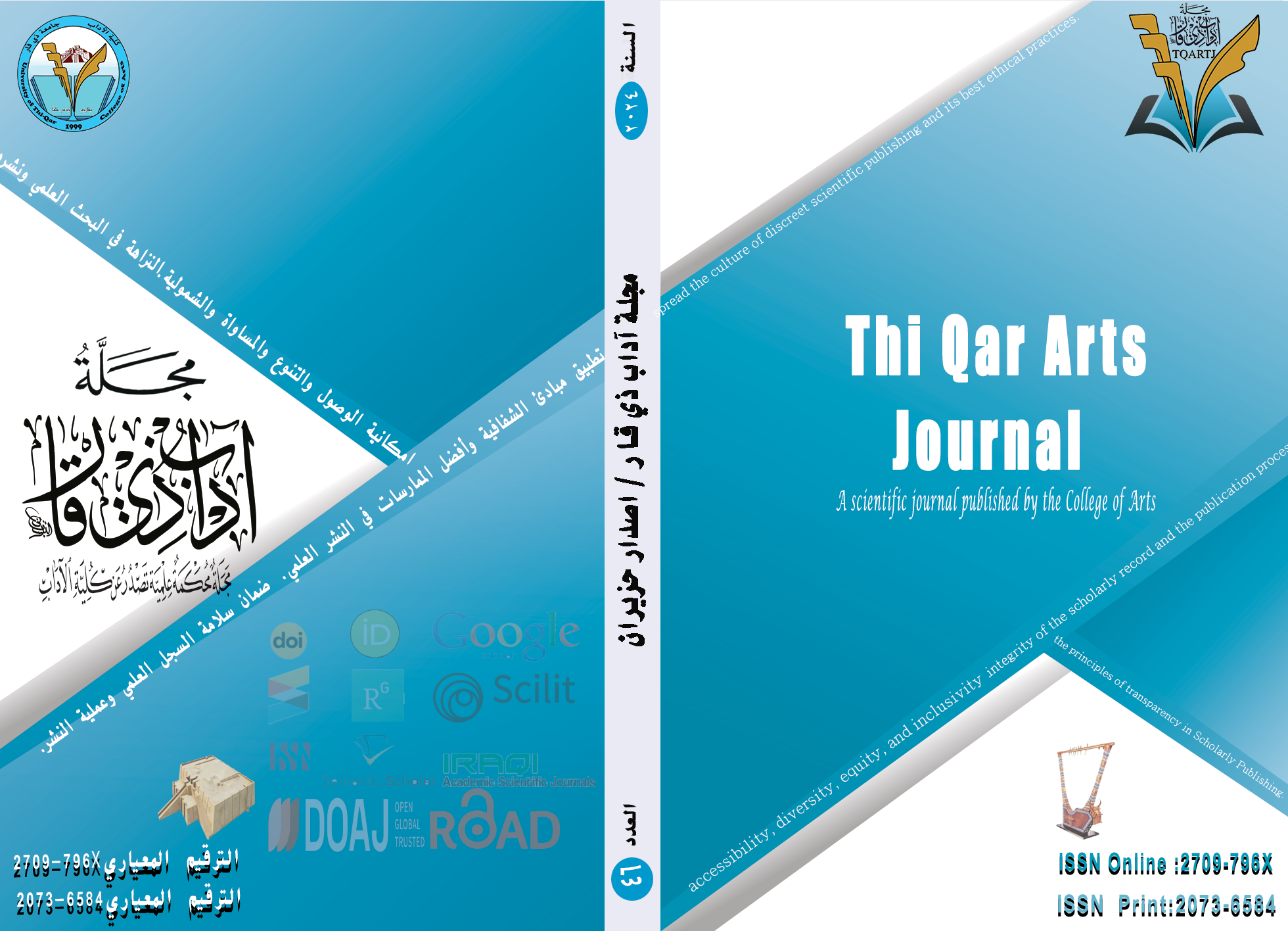The Cultural Patterns in the Stories of the Quran: The Story of Queen Bilqis as a Model
DOI:
https://doi.org/10.32792/tqartj.v4i46.624Keywords:
Literary discourse, cultural criticism, aesthetic elements, artistic connotations.Abstract
The inspiration for our research stemmed from the verse: “Do they not then reflect on the Quran?” (Quran 4:82). The research was founded on the problem: How can the texts of the Quran be interpreted using the tools of cultural criticism? The aim is to uncover the implicit meanings hidden behind the aesthetic rhetorical meanings. Based on this vision, the Quranic story, as a cultural text and a cognitive manifestation of cultural patterns, contains implicit patterns that reveal the cultural reservoir of the Quran’s renewable energy. This renewal occurs externally through its interaction with its surroundings. The research examined many implicit cultural patterns behind the texts of the Quran in Surah An-Naml.
Downloads
References
First: Sources
• The Holy Quran
Second: Dictionaries
Ibn Manzur, Lisan al-Arab, edited by Amer Ahmed Haidar, 1st edition, Dar Al-Kutub Al-Ilmiyya, Beirut, 2003.
Abu Al-Qasim Mahmoud bin Amr bin Ahmed Al-Zamakhshari, Asas al-Balagha, edited by Muhammad Basel Ayoun Al-Soud, Dar Sader, 1st edition, 1979.
Arabic Language Academy, Al-Mu’jam Al-Wasit, International Shorouk Library, 1st edition, Cairo, 2004.
Third: References
Ahmed Youssef Abdel Fattah, Linguistics of Discourse and Cultural Patterns, Dar Manshurat Al-Ikhtilaf, 1st edition, Beirut, 2016.
Jamil Hamdawi, Towards a New Literary and Critical Theory for Multiple Patterns, Alukah Publishing, 1st edition, 2006.
Suleiman Ashrati, The Quranic Discourse: A Descriptive Approach to the Aesthetics of Miraculous Narration, Dar Al-Arab for Studies, Publishing, and Translation, Damascus, 2012.
Salahuddin Abdel Tawab, The Literary Image in the Holy Quran, Egyptian General Publishing Company, Egypt, 1st edition, 1995.
Diaa Al-Kaabi, Ancient Arabic Narration (Cultural Patterns and Interpretation Issues), Dar Al-Farsi for Publishing and Distribution, 1st edition, Amman, Jordan, 2005.
Abdel Aal Al-Abdouni, Science and Religion in Islam, Al-Ma’arif Al-Hikmiyya Institute, Morocco, 2013.
Abdel Ghani Imad, Sociology of Culture: Concepts and Issues from Culture to Globalization, Center for Arab Unity Studies, Beirut, 1st edition, 2006.
Abdullah Al-Ghadhami, Cultural Criticism: Reading in Arab Cultural Patterns, Arab Cultural Center, Kingdom of Morocco, 3rd edition, 2005.
Abdullah Al-Ghadhami and Abdul Nabi Istif, Cultural Criticism or Literary Criticism, Dar Al-Fikr, 1st edition, Damascus, Syria, 2004: 77.
Al-Arabi Lakhdar, The Concept and Purposes of the Quranic Story According to Predecessors and Contemporaries, Dar Al-Gharb for Publishing and Distribution, Oran, (n.d.), (n.d.).
Muhammad Miftah, The Text from Reading to Theory, Publishing Company, 1st edition, Morocco, 2000.
Fourth: Theses and Dissertations
Arooba Jabbar Aswab Allah, The Marshes in the Iraqi Novel, Master’s Thesis in Arabic Language, University of Basra.
Fifth: Journals and Periodicals 2. Hussein Bahsoon, The Debate of Implicit Cultural Patterns in the Novel “Matarafat Al-Mar’a” by Aisha Binour, Al-Maqal Journal, 5, University of Taher Mohamed Bashar. 3. Saad Ali Jaafar Al-Murab, The Feminine Pattern in the Diwan of Alia Bint Al-Mahdi, Journal of the Center for Babylon Studies in Humanities, Vol. 8, No. 4, 2018. 4. Abdullah Habib Al-Tamimi and Sahar Hamza Kazem, The Inferiority of Women in Pre-Islamic Society and Their Superiority in Poetry, Journal of the University of Babylon for Human Sciences, Vol. 22, No. 2, 2014.
Sixth: Websites
Jamil Hamdawi, Cultural Criticism Between the Hammer and the Anvil, online critical article dated 2012/07/08.
Downloads
Published
License
Copyright (c) 2024 Dr. Alahan Abdul Amir

This work is licensed under a Creative Commons Attribution 4.0 International License.
The journal applies the license of CC BY (a Creative Commons Attribution International license). This license allows authors to keep ownership of the copyright of their papers. But this license permits any user to download, print out, extract, reuse, archive, and distribute the article, so long as appropriate credit is given to the authors and the source of the work. The license ensures that the article will be available as widely as possible and that the article can be included in any scientific archive.



















